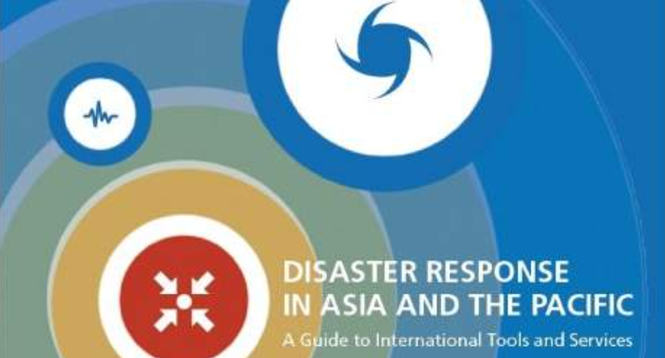
In April, the United Nations Office for the Coordination of Humanitarian Affairs (OCHA) published a new guide aimed at strengthening the capacity of governments and key humanitarian actors in managing disasters in the Asia-Pacific region. The guide underscores the importance of legal preparedness for effective disaster management, and features prominently the Guidelines for the domestic facilitation and regulation of international disaster relief and initial recovery assistance (IDRL Guidelines).
‘Disaster Response in Asia and the Pacific: A Guide to International Tools and Services,’ was developed by the OCHA Regional Office for Asia and the Pacific (ROAP) at the request of states and humanitarian partners in the region. It serves as a handbook outlining the various international tools and services available to governments across Asia-Pacific for both disaster preparedness and response.
As millions of lives in the Asia-Pacific region are shaken by natural disasters each year, there is increasing recognition of the crucial role played by national authorities, local governments and affected populations themselves, in responding to disasters. This was highlighted in a regional partnership workshop held by OCHA in Shanghai in September 2011, where it was suggested that a handbook would usefully enhance the knowledge of actors in the region on how to mobilise international disaster response instruments and mechanisms.
The resulting guide is the first of its kind globally and covers three main areas, namely the international humanitarian architecture, disaster preparedness, and disaster response mechanisms. The IDRL Guidelines are featured in the section on humanitarian architecture as part of the regulatory framework for international disaster assistance, and are covered in more detail along with the Model Act for the Facilitation and Regulation of International Disaster Relief and Initial Recovery Assistance as key reference tools for enhancing legal preparedness.
To illustrate the significant impact of the IDRL Guidelines in the region, the guide describes how numerous IDRL technical assistance projects are paving the way for meaningful changes in domestic laws to better manage international disaster assistance. It notes that new disaster management laws drawing on the IDRL Guidelines have been adopted in several countries in the region, including Indonesia, Cambodia, New Zealand and the Philippines.
The guide’s main audience is national disaster management authorities, but it will also be a useful reference for international and regional organisations, civil-society actors and disaster-affected communities. It was developed in consultation with government officials from Asia-Pacific, representatives of international organizations, the Red Cross and Red Crescent Movement, national and international NGOs, and humanitarian donors.
It serves as a menu which maps the vast network of support systems and mechanisms accessible to improve capabilities and assist national governments during emergencies. The guide is available for download at the OCHA’s ROAP website (http://www.unocha.org/roap/).